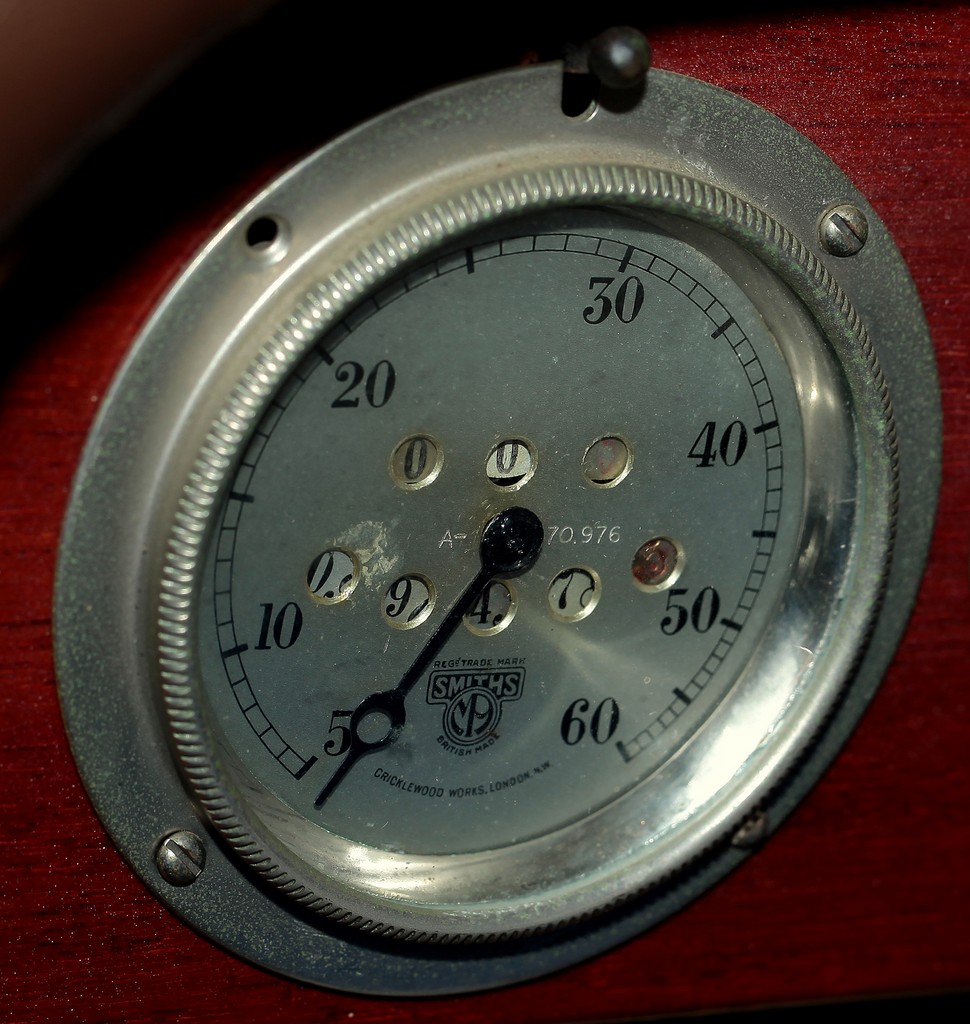SMITHS SPEEDOMETER
This watch chronometer and instrument makers business was established by Samuel Smith in London in 1851. Their premises were in The Strand and they were watchmakers to the Admiralty. Retailing and wholesaling of Smiths-branded motor accessories was added in 1904 when a Watford supplier turned out Smith's first speedometer—The Perfect Speed Indicator. Growth was fast. Smiths began to manufacture some of their own motor products particularly speedometers. From mid-1913 all motor accessories activities were carried out from handsome purpose-built premises at Speedometer House, 179-185 Great Portland Street ("Motor Row"). The premises in the Strand became a Lyons tearoom but jewellers establishments were retained at Trafalgar Square and 68 Piccadilly. By this time motor accessories production included Smiths multiple-jet carburettors (designed by Trier & Martin), lighting sets and electric starters, generators and the Smith's Auto-Clear mechanical horn.
The outbreak of war in 1914 led to the capture of markets around the world previously held by the German competition. By 1915 new War Office contracts for aeroplane accessories, lighting sets etc and munitions required the speedy erection of a new freehold factory. The new factory, known as Cricklewood Works, was built at Cricklewood, north London. In 1921 Great Portland Street activities were moved to Cricklewood following 1920's purchase of the former Metallurgique works alongside their Cricklewood Works. Post World War I their accessories became standard fittings in new cars all provided by the manufacturer.
The outbreak of war in 1914 led to the capture of markets around the world previously held by the German competition. By 1915 new War Office contracts for aeroplane accessories, lighting sets etc and munitions required the speedy erection of a new freehold factory. The new factory, known as Cricklewood Works, was built at Cricklewood, north London. In 1921 Great Portland Street activities were moved to Cricklewood following 1920's purchase of the former Metallurgique works alongside their Cricklewood Works. Post World War I their accessories became standard fittings in new cars all provided by the manufacturer.
